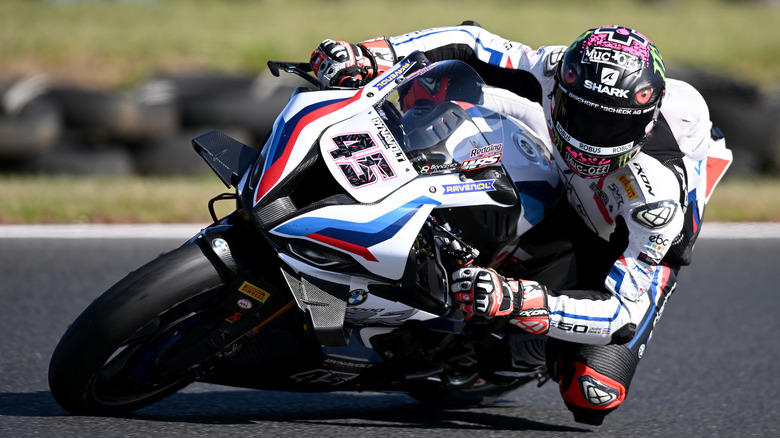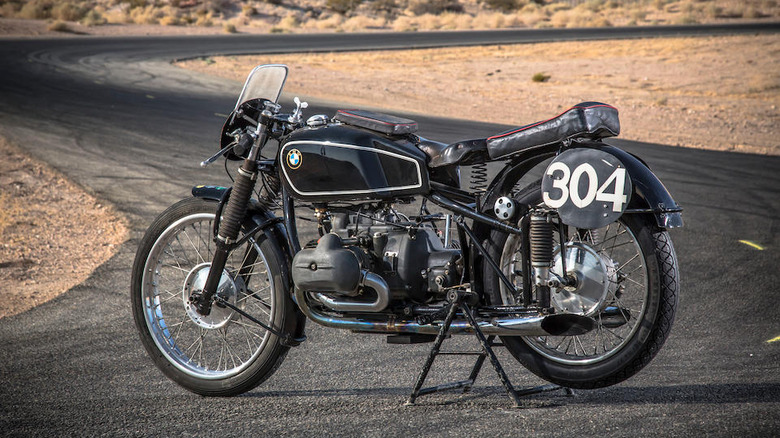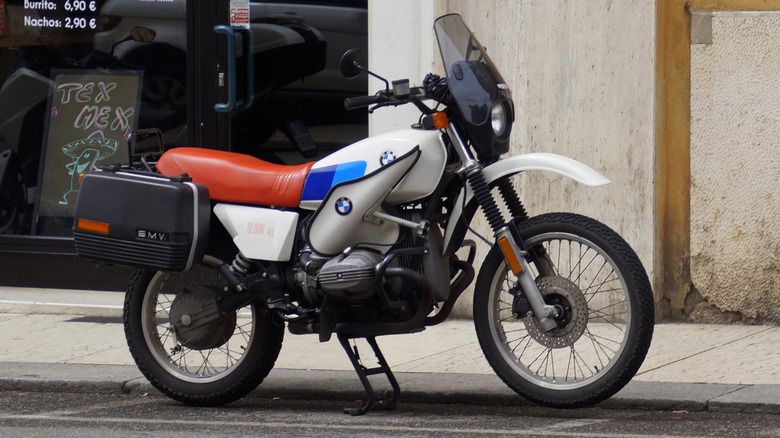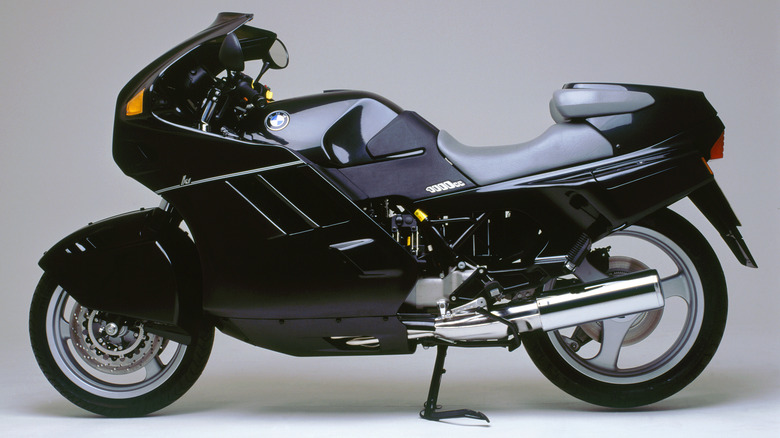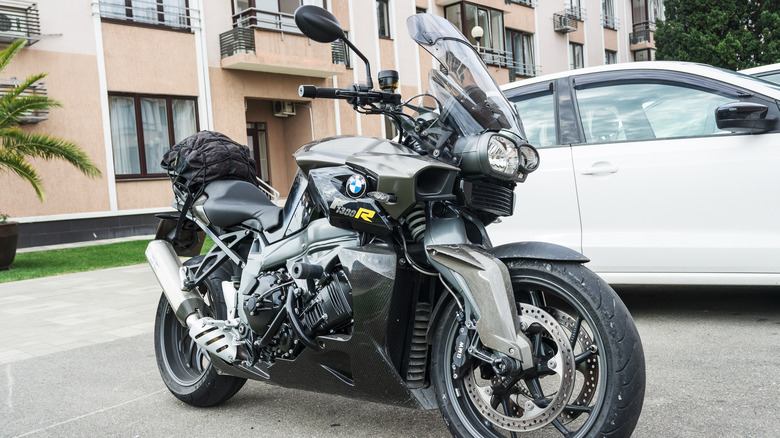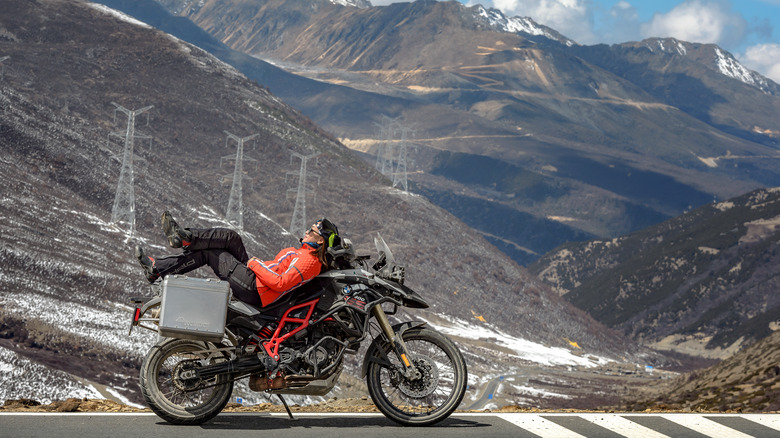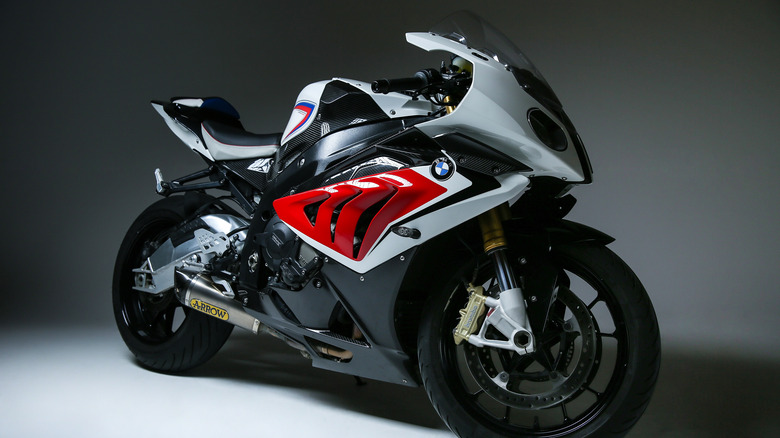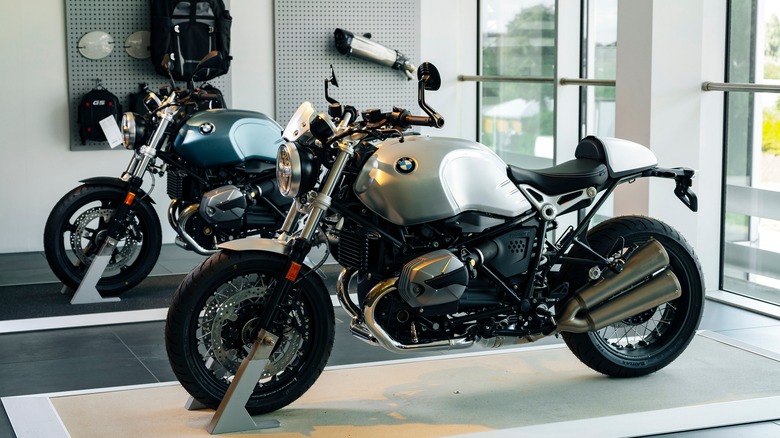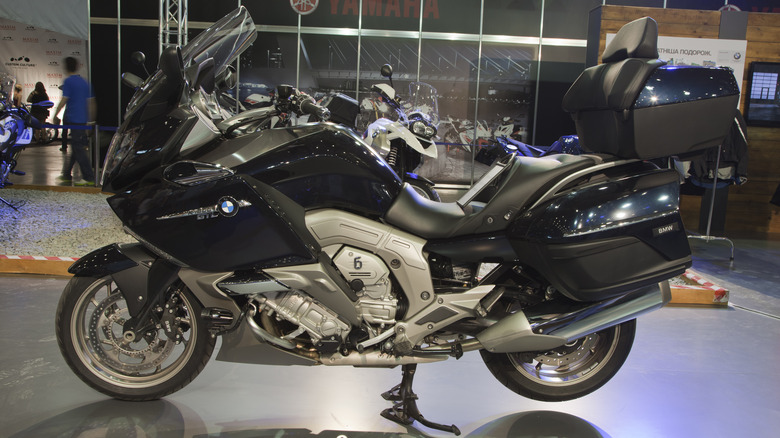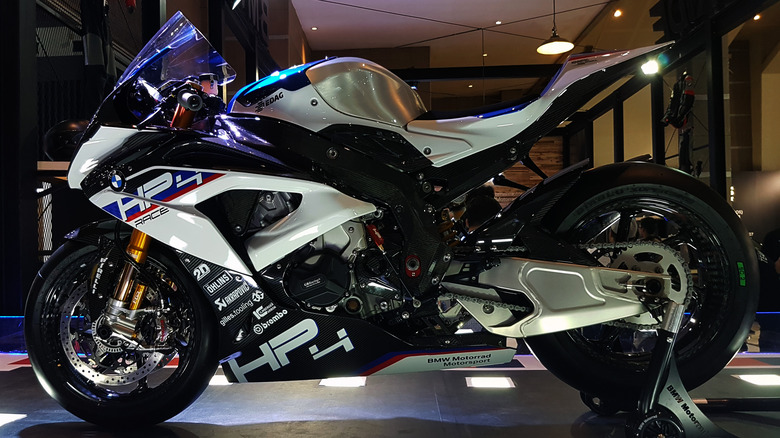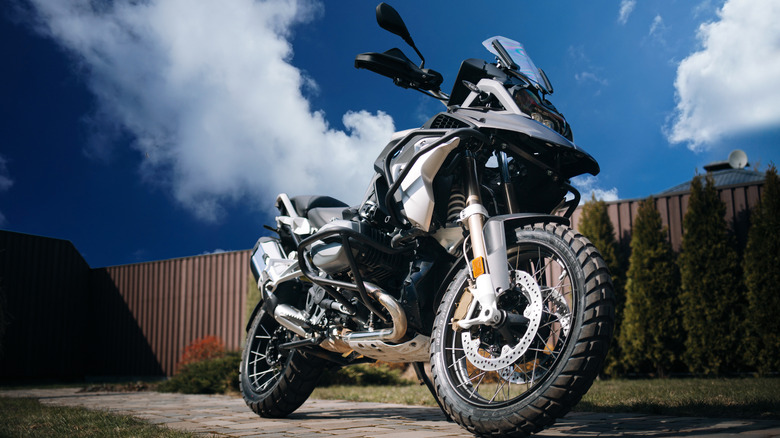The 10 Best BMW Motorcycles Ever Made
When most of us think of BMW as a brand, we envisage high-end or luxury saloon cars known for their comfort, reliability, and performance. In fact, Bayerische Motoren Werke AG, to give it its full name, has its roots in aircraft engine manufacture, and its motorcycle production branch, known as BMW Motorrad, produced its first successful vehicle as far back as 1923. The German marque has since become one of the largest motorcycle manufacturers, producing some of the best quality and best-performing vehicles in the industry from their highly-automated and futuristic Berlin-Spandau plant.
As with the BMW line of automobiles, BMW Motorrad is known for its products' build quality and performance. Historically, much of its success can be attributed to the reliable "Boxer" twin engine, as seen in all R Series machines, which is still in use 100 years later. Such is its reliability that the BMW has been the motorcycle of choice for many militaries, police forces, racers, and endurance riders the world over, as well as often being the chosen ride of several celebrities and bike critics. For example, the much-celebrated GS series of adventure bikes were popularized in the Ewan McGregor and Charley Boorman documentaries "Long Way Round" and "Long Way Down" and were used exclusively by Neil Peart of the band Rush on his travels and featured in his accompanying novels.
There is a BMW motorcycle to suit every type of terrain, riding style, and class imaginable, from dual-sport bikes, to luxury cruisers, to high-powered racing bikes, to world-straddling adventure bikes, and they excel in every category. Here we present the ten best motorcycles in this much-lauded manufacturer's distinguished history.
BMW Type 255 Kompressor
Racing has always been an effective marketing tool for auto companies, and with the Type 255 Kompressor, manufactured between 1926 and 1939, BMW had great success. This bike was created purely for racing and won many accolades over its relatively long production run. During this tenure, it experienced multiple changes in its specifications while staying true to its original form.
The BMW Type 255 Kompressor was also one of the first motorcycles to use telescopic forks, a system that has been adopted by almost all modern motorcycles, and you can see much of the evolution of the modern BMW in its lines and specifications. These include a horizontally-oriented flat twin engine with a shaft-driven four-speed transmission, a 492.6 cc engine, and a top speed of 140 miles per hour.
While the remaining units of the BMW Type 255 Kompressor are now mostly museum pieces that fetch prices reaching hundreds of thousands of dollars at auction — like the one shown above, as auctioned with Bonhams — there is no doubt as to the indelible mark this machine left on motorcycle racing history and the influence it had on the manufacturing techniques and design elements of the BMW motorbikes to come.
BMW R80 G/S
The Paris-Dakar Rally is one of the world's most grueling endurance races, which stretches from France to Senegal and requires riders to cross the Sahara Desert. One machine that enjoyed back-to-back wins for BMW in this competition was the world's first large-capacity dual sport motorcycle and the first of BMW's dominant GS series, the BMW R80 G/S. This heavy-duty off-roader became a precursor to Honda's Africa Twin, the Yamaha Ténéré, The Kawasaki KLX series, and multiple other popular bikes that were created to satisfy the growing consumer demand in the adventure segment.
In profile, the R80 G/S looks much like the modern dirt bike, with its long-travel telescopic front forks and mono lever swing arm rear suspension. As part of the R Series of BMW two-wheelers, it sported the characteristic four-cylinder, horizontally-opposed Boxer twin engine, which delivered 50 horsepower at 6,500 rpm. The almost 800 cc air-cooled engine was tuned to provide maximum torque, but the bike had a relatively low top speed of 104 miles per hour. Much like many BMW motorcycles before it, it featured a driveshaft instead of a chain (a tradition they continued with other bikes in the GS series).
While by today's standards, the BMW R80 G/S would not be highly competitive, this was a one-of-a-kind vehicle that rewrote the rules as to the capabilities of the modern motorcycle. As the first-ever dual sport two-wheeler that created a class all of its own and laid the foundation for multiple competitions and outbound adventures, the R80 G/S is, without a doubt, one of the greatest bikes that BMW ever produced.
BMW K1
To glance at the BMW K1 when it first rolled off the production line in 1989, you'd be forgiven for thinking it was built by a Japanese manufacturer, with its highly-aerodynamic fiberglass faring, swept-back cowl, and aggressive riding position. It was quite unlike anything the German brand had ever created before, looking more like the bike from the movie "Tron" than previous BMW sport bikes. There was, however, a method in their madness, and not only was the aerodynamics highly effective, but the bike was among the first to feature ABS braking and was surprisingly comfortable for a bike of its class.
Mechanically speaking, the engine was also unique to BMW, as it featured a liquid-cooled, four-cylinder longitudinal block, meaning its crankshaft runs parallel to the bike's driveshaft (note, this was another chainless, shaft-driven offering from the brand). This allowed the 987 cc machine to punch above its considerable 258-kilogram wet weight, delivering 100 Nm of torque at 6,750 rpm. While BMW restricted the engine to 100 brake horsepower, the K1's top speed was an autobahn-devouring 149.4 miles per hour, and it reached 60 miles per hour in under four seconds.
While it was polarising when it first appeared, public opinion of the BMW K1 has softened in the intervening years. The bike shook up the BMW brand, which was known for its dependable but pedestrian designs, by offering road-going bikers an exciting, innovative, and effective machine with fuel injection and anti-lock brakes as standard. It would take years before such features would be adopted by other brands, and there is no disputing that the world's first sports tourer was well ahead of its time.
BMW K1300R
For a long time, BMW toed the line by restricting its road-going production motorcycles to 100 horsepower, but this changed in the mid-1990s with the introduction of the 130 horsepower K1200 RS. This new attitude paved the way for subsequent high-power street bikes, such as 2008's BMW K1300R, with its remarkable 173 horsepower output.
Around the turn of the century, there was a growing trend for "naked" bikes, which are essentially sports bikes with their fairing removed, similar to the café-racers of yesteryear. The K1300R had its competitors, such as Triumph's 675-cc Street Triple, or the Ducati Monster 900, but with its almost 1300-cc engine, even the Suzuki Bandit 1200 was not as fearsome as this Teutonic terror. Looks-wise, the K1300R had the appearance of a street bike on steroids, with its bulky and bulging profile, its acutely-angled fuel tank, and its fiberglass-clad front forks. It was comfortable, too, with a nice wide seat, which was uncharacteristic of the sports bikes from which it was derived. Pillion passengers were also treated to a wide rear seat and grab rails, making this a practical, high-performance machine that was well-suited to long rides, even when traveling two-up.
The BMW K1300R's specifications were nothing short of impressive, with its four-cylinder, liquid-cooled engine providing 140 Nm of torque at 8,250 rpm and a top speed of over 162 miles per hour. It was quick as well, with a 0-60 mph time of 2.9 seconds, impressive for a bike with a wet weight of 243 kilograms. In short, the K1300R was the perfect marriage of good looks, driving dynamics, high-tech accessories, and performance, making it the ideal flagship to lead the brand confidently into the next decade.
BMW F800GS
BMW has been dominant in the world of adventure biking for some time, largely thanks to the great popularity of the R1200GS, but some riders of shorter stature, or those that require a lighter, nimbler machine, favor the BMW F800GS. As the little brother to the much larger 1200, this mid-sized adventure bike has plenty going for it. Easier to handle yet still powerful and capable, it has been a mainstay of the GS range for many years.
Unlike other bikes in the GS range, the F800 is fitted with a parallel twin engine instead of the bulkier boxer twin, putting it in a similar category as the Yamaha Ténéré 700. This compact alternative is well-suited to a bike of this style and helps facilitate off-road riding that requires better maneuverability. While the BMW F800GS is not overpowered at around 90 horsepower, it packs plenty of torque (80 Nm at 5750 rpm), has a maximum speed of 124 miles per hour, and handles well both on and off-road.
This excellent handling is assisted by traction control, ABS brakes, and large, wire-spoked wheels, which are favorable when tackling uneven surfaces. Its double-strut aluminum rear swing arm and long travel front forks also absorb shocks with ease, and the F800GS is economical, with an average tank distance of 194 miles. For those who don't necessarily think bigger is better and prioritize performance and practicality over power and posturing, the BMW F800GS is a more-than-worthy choice of vehicle.
BMW S1000RR
From the start of this century, the great Japanese motorcycle manufacturers Honda, Kawasaki, and Yamaha dominated the superbike market, but all this changed with the introduction of the BMW S1000RR. This 1-liter monster was the first to use such features as a quick shifter and traction control, and it quickly became the benchmark by which other superbikes were compared. Initially created to compete in superbike class races (which it dominated), the S1000RR proved too good not to be offered to the general public and soon became one of the best-selling BMW bikes in history.
The BMW S1000RR is still in production, and the latest model does not disappoint in terms of its build quality, rideability, and specifications. Its lightweight aluminum frame is bolstered by a load-bearing 999 cc engine that delivers 113 Nm of torque at 11,000 rpm. It has a six-speed gearbox with an anti-hopping clutch, and, unlike many BMWs in its class, it features a double-sided swingarm rear suspension, and is chain-driven. It is relatively light for a bike of this capacity at 197 kilograms and has excellent stopping power, assisted by ABS Pro anti-lock brakes with modes for rain, dynamic, road, and race. The S1000RR's top speed is an eye-watering 189 miles per hour, and it reaches 60 miles per hour in just over three seconds.
The S1000RR is the ultimate racing package. A highly customizable road rocket that demands skill and dedication to meet its considerable potential, but one that is nonetheless accessible to the roadgoing public and affordable if you are not buying new.
BMW R nine T
At some point before 2014, BMW decided to go back to its roots and create a classic-inspired road-going motorcycle that had fewer frills and focused on the rider experience. The result, released that year, was the oddly-named BMW R nine T. Its mix of classic and modern styling proved very popular with the biking community, and its excellent handling and all-around performance resulted in four spin-offs inspired by the base model, namely the R nine T Scrambler, R nine T Racer, R nine T Urban G/S, and the R nine T Pure.
The Scrambler is, of course, a dual sport bike that excels off-road; the racer is racing-tuned and features a very cool retro cowling at its front end; the Pure has classic roadster styling, and the R nine T Urban G/S is a go-anywhere machine that is based on the R80 G/S mentioned earlier. Add to this list the countless customization options, and you have a highly versatile machine that can be molded to suit your individual riding style and requirements.
As far as specs are concerned, the BMW R nine T is no slouch. As part of the "R" series of motorcycles, this bike has the twin-cylinder, horizontally-opposed boxer engine that the brand is well-known for, which puts out an impressive 116 Nm of torque at 6000 rpm. It also features the single-sided swing arm and shaft final drive that is typical for an R Series motorcycle. Performance-wise, this bike will top 125 miles per hour with a following wind, and it reaches 60 miles per hour in just over three seconds, so the R nine T may be a modern classic, but it certainly has some fire in its belly.
BMW K1600GTL
No list of great BMW motorcycles would be complete without a mention of the BMW K1600GTL. This grand tourer rivals (but never quite superseded) the Honda Gold Wing in the grand tourer segment. Extremely comfortable for long-distance riding and highly powered at a whopping 160 horsepower, it was also technologically advanced when it was released in 2011.
The six-cylinder (yes, six!) engine was engineered to be the most streamlined ever built for a motorcycle, but it still had a capacity of 1,649 cc, which is larger than many automobiles. To look at it in profile, it was an aesthetic masterpiece, with its reassuringly bulky front fairing, high windshield, and extra wide seat. At the rear, the pillion was treated to what has to be one of the most comfortable thrones ever to grace a motorcycle, complete with back support and a headrest, in front of a handy large-capacity top box. Its two additional side panniers meant the K1600GTL was ideal for long trips away for two people, with plenty of space for luggage.
Fast forward ten years to 2021 and the BMW K1600GTL has been upgraded for the new decade, although not much has changed with regard to its specifications. It does, however, have Dynamic ESA suspension with multiple riding modes, as well as the ABS Pro braking system. The K1600GTL was designed to be admired, and it cannot fail to impress anyone who lays eyes on this incredible machine.
BMW HP4 Race
If practicality is high on your agenda, the BMW HP4 Race is not for you, and unless you are familiar with the world of superbike championships and Moto GP, it is unlikely that you would have seen one up close and personal. This lightweight machine mainly uses carbon fiber in its construction and delivers 215 horsepower while weighing in at just 146 kilograms — a frightening power-to-weight ratio — and at a cost of almost $80,000, it is unattainable for most motorcyclists, and it requires incredible skill to ride to its limitations.
With that said, if you are qualified to ride this exclusive, hand-built vehicle, it will likely be the most impressive motorcycle you have ever straddled, and the specifications alone speak for themselves. It has a carbon fiber frame, carbon fiber exhaust, and carbon fiber wheel rims. Its water and oil-cooled, four-cylinder, 999 cc capacity engine delivers 120 Nm of torque and pushes the bike to a top speed of almost 190 miles per hour. It has Brembo Moto GP-style GP4 PR brakes with titanium pistons and nickel-plated aluminum calipers, a race-shifting transmission, and Öhlins superbike front suspension. Basically, everything on this bike is optimized for weight and track performance, and it certainly does perform.
Of course, there are compromises with superbikes of this caliber. If you wish to carry a pillion passenger, you are bang out of luck. Accessories, such as a 12-volt socket, onboard navigation, and heated hand grips, were not even a consideration when the HP4 Race was designed. It doesn't even feature a kickstand. This is the Spartan warrior of motorcycles, conceived for battle with a highly specialized set of weapons and very sharp teeth.
BMW R1200GS
Anyone with a passing interest in motorcycles will be familiar with the BMW R1200GS, as it is often ranked as one of the best ADV motorcycles in the world. Indeed, with over 60,000 units sold in 2021 alone, the R1200GS and its R1200GS Adventure spin-off were instrumental in helping BMW Motorrad achieve a record 14.8 percent sales increase that year, despite the global pandemic and economic downturn.
So, what is so special about the BMW R1200GS? It is one of the most popular "big bikes" for very good reasons, as it is versatile, adaptable, and customizable to accommodate many different terrains, routes, climates, and riding styles. It handles exceptionally well for a bike that is so tall, with a seat height of 35.2 inches, and one that has such a large engine capacity of 1,170 cc. Whether you are eating up highway miles or traversing rugged terrain, the R1200GS has you covered, thanks in no small part to its preload-adjustable, long travel front suspension and the tried and tested rear single-sided swing arm with direct drive shaft.
The BMW R1200GS is also quick in its class, with a top speed of 132 miles per hour, and is capable of reaching 60 mph in just 2.9 seconds from standing. As the successor to the popular R 1150 GS, as seen in the motorcycle documentary "Long Way Round," BMW managed to sheer a staggering 30 kilograms from its weight while simultaneously increasing its engine capacity, resulting in a much more refined and manageable machine. But is it worthy of being called "the best BMW motorcycle" of all? In terms of aesthetics, versatility, speed, and off-road capability, we certainly think so, and it looks like the large GS series bikes will be ruling the motorcycling roost for many years to come.
